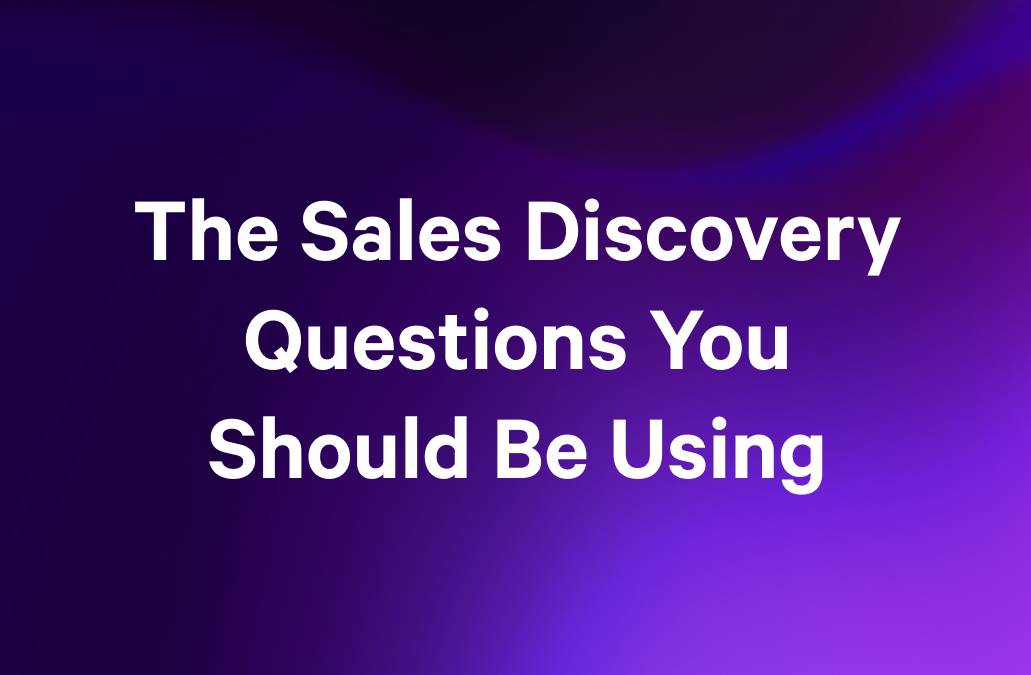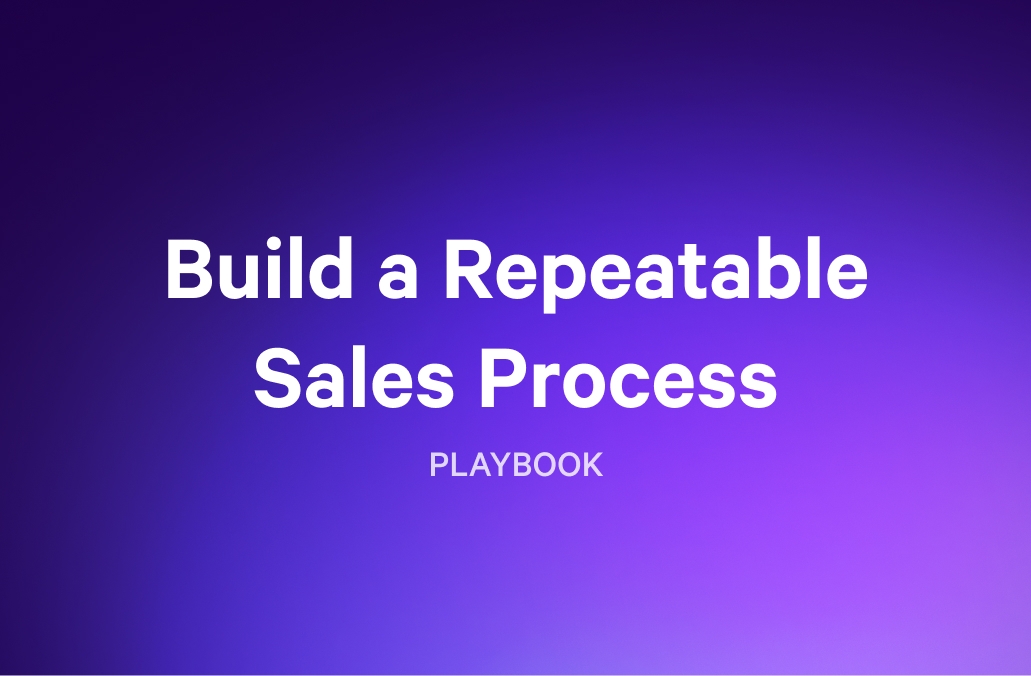Achieving sales targets and securing deals is crucial for any business. However, success isn't solely attributed to a stellar marketing team generating leads or sales reps tirelessly working to close each one.
While it's common for teams to focus on optimizing various aspects of their operations, the sales process can sometimes be overlooked. This oversight can lead to lost leads and missed opportunities. In particular, when sales teams are left to create their own pitch decks, CRM processes, and proposal templates, it can result in wasted time and potential revenue loss.
The solution?
A well-defined, streamlined, and optimized sales process that guides your team in converting more prospects into paying customers. In this article, we'll outline a 7-step sales process and discuss proven tactics to enhance your sales activities' efficiency, from lead generation to closing the deal.
Let's dive in!
What is a sales process?
A sales process is a series of steps that reps follow to convert potential leads into paying customers. It acts as a roadmap for guiding prospects through the customer journey, from initial contact to reaching a buying decision, and often extends to onboarding and fulfillment.
A well-defined sales process empowers sales teams to achieve consistency in their approach, streamline their workflow, and ultimately increase their win rates.
Steps of a sales cycle
While the length and intricacy of a sales cycle may vary across industries, products, and services, there are 7 common steps you’ll typically find in any high-performing sales process:
1. Preparation
The first part of the sales process involves preparation. This phase primarily focuses on researching and amassing information about the prospect's buyer intent, pain points, and organizational structure, equipping sales reps with valuable insights for their approach.
2. Prospecting
Once there’s a clear understanding of who the target buyer is, the prospecting stage commences. Prospecting involves identifying new leads that match your ideal customer profile (ICP). This may include marketing campaigns, conferences, outbound sales, webinars, SEO, and partnerships to name a few possible channels.
3. Approach
In this stage, sales reps initiate contact with prospects, typically through phone calls or emails. Often referred to as a discovery call, this interaction helps uncover the prospect's requirements and explore potential solutions.
4. Presentation
Following the approach, sales reps present their product or service to prospects with a product demo, or case studies that illustrate how others have benefited from the offering. Tailoring the presentation to address the prospect's specific needs is crucial to demonstrate value.
5. Handling Objections
After the presentation, prospects may express concerns or objections that must be addressed before advancing in the sales cycle. Sales reps should listen attentively, empathize, and provide thoughtful responses to alleviate any apprehensions.
6. Closing
Once objections are resolved, the sales cycle progresses to the closing stage, where the deal is finalized, and contracts are signed. Effective closing techniques include summarizing key benefits, offering incentives, or creating a sense of urgency.
7. Negotiation and Follow Up
Depending on the case, the sales cycle may extend out with further negotiation and follow-up.
Now, let's delve deeper into each of these stages in greater detail and uncover strategies and examples for optimizing your sales cycle.
Preparation
Preparation is the first step that allows businesses to create accurate and detailed profiles of their target audience.
Based on market research, competitor analysis, existing customer data, and strategic goals, buyer personas reflect the needs, preferences, challenges, and pain points of potential customers.
Today, creating accurate buyer personas is easier than ever thanks to advanced sales and marketing saas solutions that help companies gain insights into their addressable market. As a result, they can tailor their marketing strategies and sales pitches accordingly to appeal to each persona.
By creating these profiles, companies can also determine which channels are best suited to address different segments of their target audience.
Prospecting
Prospecting is the second step of the sales process. It involves identifying potential customers who match your ideal buyer personas based on certain qualifying characteristics or metrics.
For example, many sales professionals use LinkedIn filters to narrow down prospects based on various criteria such as industry, job title, and company size to effectively prospect.
Other options include asking for referrals from existing customers, attending networking events, cold calling, other social media or sending outreach emails. Every effort counts at this stage.
Approach
Approach is the next stage and it's where the real work begins.
As a salesperson, the first impression you make on potential customers can be the deciding factor in whether you close a sale or lose it forever. That's why it's important to have a well-crafted message that immediately speaks to your prospect, whether it's an email, phone call or face-to-face conversation.
Ask questions like, "Who is responsible for making a decision about this product/service?" (you always want to speak directly to a decision maker), and "when would you be available to discuss your requirements so I can advise you on how we can best support you?”
It takes practice and skill to master the approach stage because it requires excellent communication skills, active listening, and empathy for the customer's concerns.
Any misstep could undo all previous efforts to identify leads or build a successful relationship with them… so, no pressure!
Presentation
Presentation is where the sales rep introduces the product/service to potential customers.
It’s important that you prepare well for this step and tailor your sales presentation to meet specific prospect needs. Make sure you know exactly what they want and what their main concerns are – this way you can focus on the key features that are most important to them.
When creating your presentation, make sure it is concise and engaging. Avoid using too much jargon or technical language that could confuse or intimidate, and instead use visual aids such as charts, tables, or videos to illustrate your points.
Encourage feedback during your presentation. Ask questions about specific aspects of your proposal and see if they have concerns you need to address. Knowing your product/service inside and out and what makes it stand out will help you position yourself as a unique solution to your prospective customers’ problems at this stage.
Handling objections
Handling objections with grace is an essential skill for any salesperson.
When potential customers raise objections – whether it’s pricing, product features, or simply not being ready to make a decision yet – it can be challenging to handle them effectively and continue the conversation without losing their interest or trust.
Here’s how you do it:
- The first step is to actively listen and understand the customer's concerns.
- Once identified, addressing these objections with confidence and empathy will help build rapport with them while also establishing credibility for your product or service.
- Use open-ended and follow-up questions that allow them to share more about specific customer needs you can then address.
No matter how hard it might be (and it really might be at times!) avoid arguing with potential customers' objections and maintain a positive attitude throughout. Acknowledge their thoughts respectfully and do your best to provide solutions that would benefit both parties.
Keep in mind that objections are natural and even expected in the buying process. It's how you handle them that sets you apart!
Closing
This is the final stage when your prospect turns into a new paying customer. It's the moment of truth that can undo all the efforts of the previous steps!
To close successfully, sales managers must ensure that their product/service meets the specific needs of the ideal customer profile. Ask if they have any other questions or concerns they would like to discuss to make sure all issues are resolved before signing the contract.
You can create urgency and scarcity during the close by highlighting limited offers and special promotions and encouraging prospects to act immediately if they seem unsure.
Lead follow up
The follow-up, which takes place after the sale, is actually one of the most important steps.
It is a continuation of the relationship between the seller and the buyer that ensures customer satisfaction, maintains customer loyalty, and may assist with prospecting for new customers.
Good follow-up strategies can include sending the customer a thank you note or email, calling to ask about their experience, and even asking them to rate the service or write a review if they were satisfied.
This stage of the sales process is not about selling more, but about nurturing existing customer relationships, building credibility, and creating goodwill with customers.
How to optimize your sales process?
Optimizing the sales process is critical to closing deals faster. Fine-tuning your approach could mean the difference between a languishing sales cycle and one that moves quickly and benefits both you and your clients.
Ensuring all parts of the process work in harmony, from generating leads to capturing feedback post-sale, will help establish trust with prospective clients and build momentum throughout their decision-making journey.
Mastering this art means understanding what motivates buyers, being agile enough to pivot strategies as needed, using data-driven insights for personalized outreach tactics, and streamlining communications across teams involved in the sale process; essentially, creating an efficient machine designed for taking qualified leads to closed deals efficiently.
Use instant demo booking
Instead of having leads fill out a form that goes into a CRM only to be contacted by a sales rep days later, you can have them automatically book a demo using scheduling tools!
Not only does it save time, but it also reduces the number of leads that drop off between filling out the form and attending the demo and improves the customer experience by giving leads control over when they want to see the product in action.
For instant demo booking to work effectively, make sure your website includes clear call-to-actions that prompt visitors to book an appointment directly. Your leads will thank you – most likely during the demo!
The optimized lead flow would look something like this:
- The lead fills out a form on the company's website and answers some basic qualification questions (usually company size, industry, etc.)
- If they meet the qualification criteria, they're redirected to a page with a booking form where they can select an appointment for the demo
- Once the customer selects a date, they're redirected to a confirmation page.
- From here, the lead is entered into the CRM and forwarded to the rep. Now the rep doesn't have to email or call to try to find a date for the demo – it's already booked!
Reduce initial response time
Statistics show that 78% of customers buy from the company that responds first to their inquiry and that sales are 391% higher when leads are contacted in the first minute. Reducing your initial response time (i.e. the time between the lead submitting the form and being contacted) can significantly increase the number of deals you end up closing.
The key is to examine your existing sales process and identify the bottlenecks.
Enter a new lead on your website and examine how long it takes for it to be added to your CRM and assigned to a rep, and then how long it takes them to get back to you. Depending on what you find out, you may need to update the sales team's process. That means streamlining your sales team's workflow, making sure new leads are routed correctly, and even tying compensation to initial response time to incentivize the right behavior.
You may also want to leverage CRM tools to automate the distribution of leads and follow-up tasks. Are all leads assigned to sales reps correctly and in a timely manner, and are sales reps notified when a new lead is assigned to them? If not, you should review your CRM setup and ensure that your reps are using technology to respond to new leads as quickly as possible.
Follow up with leads multiple times
It's often said that the fortune is in the follow-up, and that couldn't be truer when it comes to closing deals. It actually pays to contact potential customers more than once or twice; many people need to see your product/service more than once before making a decision.
One tactic is to provide valuable information each time you reach out to a prospect. Share relevant resources that show them how your product can solve their problems. Another option is to simply ask the customer if they have any questions about your offering.
Fortunately, sales follow-up can be automated with sales engagement tools that connect to your CRM to route new leads into workflows or cadences. In other words, you can automate the process of sending emails and call reminders and track all interactions, so nothing gets lost!
Create higher converting proposals
To create a compelling proposal, it's not enough to just describe your product/service; you need to tailor it to the specific needs of your prospect.
First, make sure you understand what the prospect expects and needs from your solution. This means you need to know exactly the customer's industry, problems, and goals in order to show how your offering can help them succeed (and lead to repeat business!).
Then, focus on creating a visually appealing offer that stands out to illustrate key points and grab the customer's attention. Consider including use cases, testimonials or case studies from similar clients who have achieved positive results after using your services.
If you're looking for great quoting software that will make this part of the process easier, we have just what you need! Try our quoting software and see if it does what it says on the tin!
Automate your sales tasks
In manual sales processes, a rep takes the standard template for a sales presentation or contract, goes through each page, and enters the customer data. This isn't just repetitive; it's also time-consuming and error-prone.
An important aspect of sales process optimization is streamlining workflows and automating repetitive tasks wherever possible. This not only saves time but also reduces errors and ensures consistency in all interactions with potential customers.
Fortunately, there are tools that can automate most tasks. For instance, various CRM systems and email marketing software help send automated follow-up emails based on certain triggers, such as when a potential lead fills out a form or clicks on a link.
You can also use chatbots on your website or social media platforms to answer frequently asked questions from potential customers, freeing up even more time for your sales team and providing prospects with immediate support.
Qwilr, for example, makes it easy to rely on document automation, advanced customization, and even dedicated account management to finally automate your sales tasks – and impress your clients!
Reduce friction during deal sign offs
The last thing you want is for a decision-maker to lose interest or become frustrated due to complications in the final stages of closing the sales deal.
Below are some tips on how to reduce friction and ensure your deals close smoothly:
- Make sure all required documents and contracts are easily accessible and ready to sign. This could mean using electronic signatures or having physical copies ready.
- Communicate clearly with your potential clients, especially when it comes to required documentation or legal requirements. Ensure they understand what they're committing to.
- Simplify the payment process. Offer different payment options, such as credit cards, PayPal, or bank transfers, so they can choose the one that works best for them.
- Always have an open ear for any questions or concerns that may arise during this phase of the sales funnel, and respond promptly and professionally to all stakeholders’ inquiries.
By incorporating these tactics into your sales approach, you can reduce friction during the contract signing process and increase your chances of a successful closing.
Last, but not least… data!
Make sure you're always using data-driven insights to analyze your sales pipeline health and understand where prospects are getting stuck in the funnel.
By tracking metrics like conversion rates at every stage of the pipeline, you can identify areas for improvement and make targeted changes to your sales strategy that will have a significant impact on your bottom line.
Based on your findings, you can create a template for a defined sales process that provides clear steps from first contact to closing the deal.
This way, you can ensure that your sales team is consistently applying best practices throughout their engagement, rather than struggling with decision-making.
FAQs
What are the 7 steps in the sales process?
A successful sales process can be broken down into seven crucial steps, each of which plays a critical role in converting potential leads into paying customers.
What is a standard sales process?
A standard sales process is a set of steps that a sales team goes through to take a potential customer from initial contact to closing the deal. The exact number of steps and their order can vary by company and industry, but there are some common elements.
Closing thoughts
Building an effective sales process requires careful planning and strategy to ensure that each step flows seamlessly into the next while maintaining a high level of customer satisfaction throughout the process.
Therefore, investing in improving skills such as communication, negotiation tactics, and understanding market trends is critical to increasing your teams' conversion rates. The same goes for investing in sales software, which impacts how well each step is executed.
A little help can’t hurt, right?
We're pleased to offer you a free 14-day trial of our business plan so you can see for yourself if we meet your expectations. Remember that just before the trial period ends, you can decide whether to continue with the Business plan or choose another option.
Excited to see what we can do for you!
About the author

Brendan Connaughton|Head of Growth Marketing
Brendan heads up growth marketing and demand generation at Qwilr, overseeing performance marketing, SEO, and lifecycle initiatives. Brendan has been instrumental in developing go-to-market functions for a number of high-growth startups and challenger brands.



